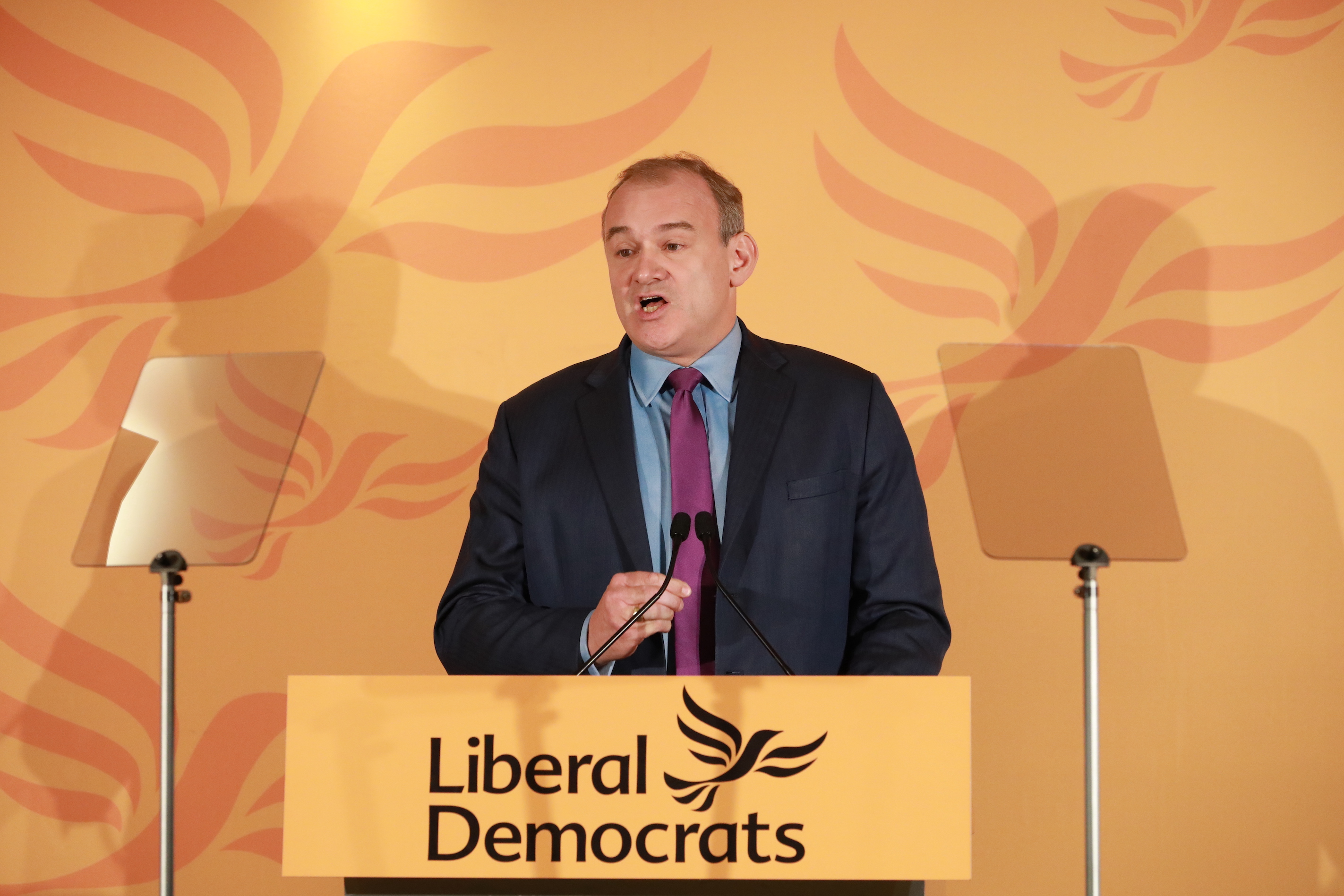It is a good time to be a Liberal Democrat. Seemingly free from the shackles of the coalition legacy, the party is on an upward trajectory. By-election victories aplenty and an on-going rebuild of its local base have reinvigorated the party faithful after a decade or more of despair.
Leader Ed Davey has also made very few wrong calls. His safety-first, technocrat leadership style may not have wowed the public but Davey’s policy expertise, professionalism and general competence have proved to be valuable assets for a party in rehabilitation.
Yet scratch beneath the surface and the deep lying problems that have bedevilled the party’s electoral growth persist. Solving the credibility conundrum remains a long way off despite the recent electoral uptick while, in an era where the leader is crucial to electoral fortunes, Davey struggles to cut through with voters, hamstrung by a lack of parliamentary representation and crucially airtime which inhibits his attempts to build a national media profile.
In our book, the ‘Liberal Democrats: From hope to despair to where?’, we lay out how this interplay between structure and agency is vital for political and electoral viability and how previous attempts to overcome these deficiencies through quick fix policy solutions only exposed a vacuum in the political identity of the Liberal Democrats.


Consequently, the party remains locked into place by their positioning in relation to other parties and is not the master of its own destiny. Yet, as the general election nears and one of the Liberal Democrats’ main rivals falters, political opportunities exist for the party to capitalise and re-establish itself as a key player in British politics once more.
The Liberal Democrats’ autumn conference therefore takes on even greater significance than usual. It serves not only as an event that secures column inches in newspapers, slots on national news outlets and social media attention but as forum through which distinctive, headline policy positions are proposed and articulated into the wider political discourse.
It is an opportunity for the party to counter the claim ‘no-one knows what they stand for’ and forge a dialogue with the electorate. And with the ‘political winds’ in a turbulent state on a number of pivotal issues, now seemingly is the time for the Liberal Democrats to set out their stall. As we note in our book, the policy arena has to be carefully chosen, reflective of where reputational capital has been built and ideally where one of the main parties has either vacated the arena or has become reluctant to reassert its issue ownership.
Prime minister Rishi Sunak’s recent unravelling of the Conservatives’ environmental policies in pursuit of the 2050 net zero target and Labour’s watering down of its own initial Climate Change proposals provides an opening for the Liberal Democrats to set out a bold long term ‘green vision’.
Given the party’s longstanding environmental credentials, Davey’s expertise garnered from serving as Secretary of State for Energy and Climate Change from 2012 to 2015 and the party’s national and local campaigns against raw sewage being pumped into rivers and seas, it would not be a ‘stretch’ for the party to occupy the political space vacated by its rivals.
With the issue likely to be a salient, major fault line between the two main parties at the next election, Labour will be reluctant to expose itself to accusations of burdening hardworking families to the costs of ‘going green’. Strategically it also makes sense, simultaneously neutering any shifts to the Greens and broadening its appeal to young professionals, an increasingly key demographic in the so-called ‘Blue Wall’ seats located in the hinterland of London.
Elsewhere a radical childcare policy would ‘steal a march’ on Labour who, based on a recent policy document promise reforms to increase flexibility and elevate standards but within the restrictions of existing expenditure. Taking Labour on over childcare represents a gamble given the party’s perceived ownership of the issue but one worth taking on given Labour’s excessive cautiousness on funding promises and the possible electoral payoffs among certain demographics in key contests against the Conservatives.
Social care remains a ‘political hot potato’ which both main parties despite manifesto promises seem reluctant to grapple head-on. Much has been made of Davey’s own personal experiences which despite having a media airing are unlikely to have seeped into the wider electorate’s psyche. A radical vision for social care would not only differentiate the Liberal Democrats from its rivals but allow Davey to connect on a personal level with key sections of the electorate.
Put together, bolder proposals in these three policy areas – alongside measures for people to see a GP in a week and a ‘Skills Wallet’ where every adult can spend £10,000 on education and training throughout their lives – would represent a ‘social liberal’ vision and decisively shift the party to the left of Labour where the party enjoyed so much success during the mid-2000s.
With Labour now vacating this space, it strategically makes sense not to compete with its rivals in a crowded arena but pursue a distinctive agenda which stands out in the novelty of its appeal. With the political mood seemingly embracing ‘time for a change’ but Labour under Starmer struggling to install the hope and ‘good feel factor’ which embodied Tony Blair’s landslide victory in 1997, the Liberal Democrats could fill this void through a positive, distinctive, bold agenda which could in the long term go some way to solve their identity crisis.
The conference needs to be the start of this process but it remains to be seen whether the Liberal Democrats will grab this opportunity with both hands.
Politics.co.uk is the UK’s leading digital-only political website, providing comprehensive coverage of UK politics. Subscribe to our daily newsletter here.

